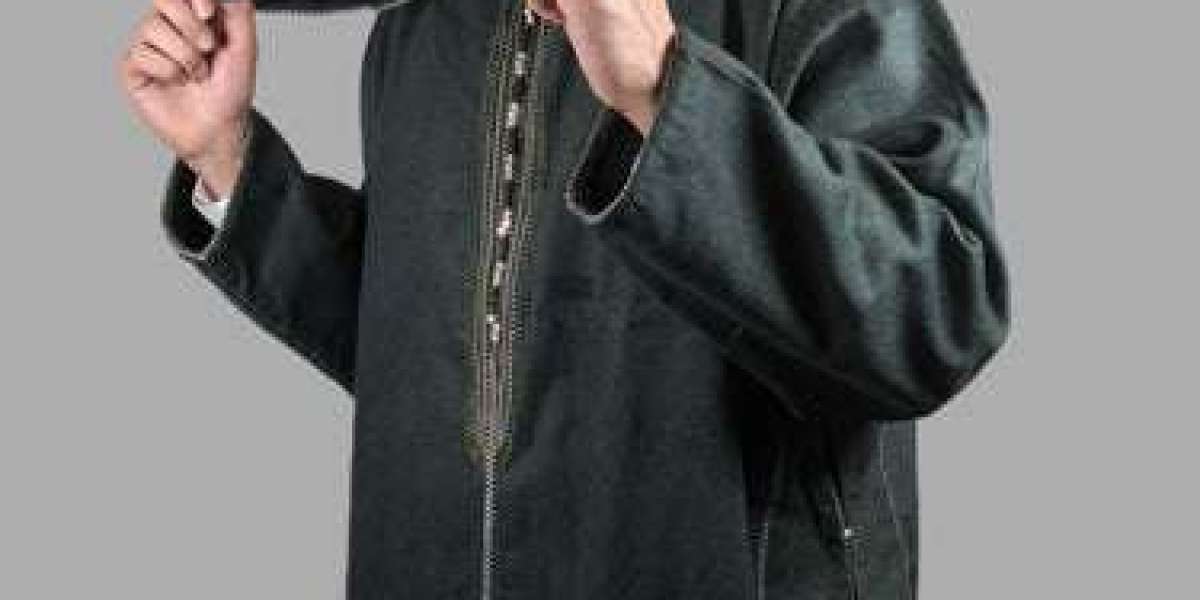The Moroccan thobe, a garment deeply rooted in the cultural heritage of Morocco, stands as a testament to the country's rich history, artistic craftsmanship, and enduring traditions. Among its various forms, the Moroccan thobe with a hood, often referred to as a jellaba or djellaba, holds a particularly special place. This iconic piece of clothing transcends mere functionality, embodying a blend of practicality, modesty, and aesthetic appeal that has captivated hearts for centuries.
A Garment Steeped in History and Tradition
The origins of the Moroccan thobe with hood can be traced back centuries, evolving from simple, practical garments worn for protection against the elements into the sophisticated and diverse styles seen today. The addition of the hood, a defining feature of the jellaba, likely served practical purposes, offering shelter from the sun, wind, and rain prevalent in the Moroccan climate. Over time, the hooded thobe became deeply ingrained in Moroccan culture, worn by men and women across different social strata and for various occasions. It is a common sight in bustling city souks, serene rural villages, and during important religious and social gatherings.
The Practical Elegance of the Hooded Design
The hood of the Moroccan thobe is more than just an aesthetic detail; it is a functional element that adds to the garment's versatility. In the scorching desert heat, the hood provides essential shade, protecting the wearer from the sun's intense rays. Conversely, during cooler evenings or unexpected downpours, it offers a layer of warmth and protection from the elements. The generous size of many jellaba hoods allows them to be drawn forward to shield the face or even used as a makeshift covering during prayer or rest. This inherent practicality contributes significantly to the thobe's enduring popularity.
Diverse Styles and Exquisite Craftsmanship
While the fundamental design of the hooded Moroccan thobe remains consistent, a remarkable diversity exists in terms of fabrics, colors, embellishments, and tailoring. Traditionally, jellabas were crafted from natural materials like wool, cotton, and linen, chosen for their breathability and durability. Today, a wider range of fabrics, including silk and synthetic blends, are also used, catering to different preferences and occasions.
The artistry of Moroccan craftsmanship is vividly displayed in the intricate details that often adorn these thobes. Skilled artisans employ various techniques, including tarsiz (embroidery), maâlem (fine needlework), and the addition of sfifa (braided trimmings) and aqad (ornamental knots), to create unique and visually stunning pieces. The patterns and colors chosen often carry symbolic significance, reflecting regional traditions, tribal affiliations, or personal preferences. From simple, everyday jellabas in muted tones to elaborately embellished garments worn for weddings and festivals, the hooded Moroccan thobe showcases the rich artistic heritage of the country.
The Moroccan Thobe with Hood in Modern Times
Despite the forces of globalization and changing fashion trends, the Moroccan thobe with a hood continues to hold a significant place in contemporary Moroccan society. It is not merely seen as traditional attire but as a symbol of national identity and cultural pride. While modern adaptations and variations exist, the classic hooded design remains a timeless and cherished garment. Young and old alike embrace the jellaba, wearing it for religious observances, family gatherings, and even as a comfortable yet stylish everyday outfit. Its enduring appeal lies in its ability to seamlessly blend tradition with modernity, practicality with elegance.
Conclusion
The Moroccan thobe with a hood is far more than just a piece of clothing. It is a tangible representation of Morocco's rich cultural tapestry, woven with threads of history, practicality, and artistic expression. From its humble origins to its enduring presence in modern society, the jellaba stands as a testament to the timeless appeal of well-crafted garments that honor tradition while embracing the present. Its iconic hood, functional design, and the exquisite craftsmanship that often adorns it ensure that the Moroccan thobe with a hood will continue to enchant and captivate for generations to come, serving as a proud emblem of Moroccan heritage.

